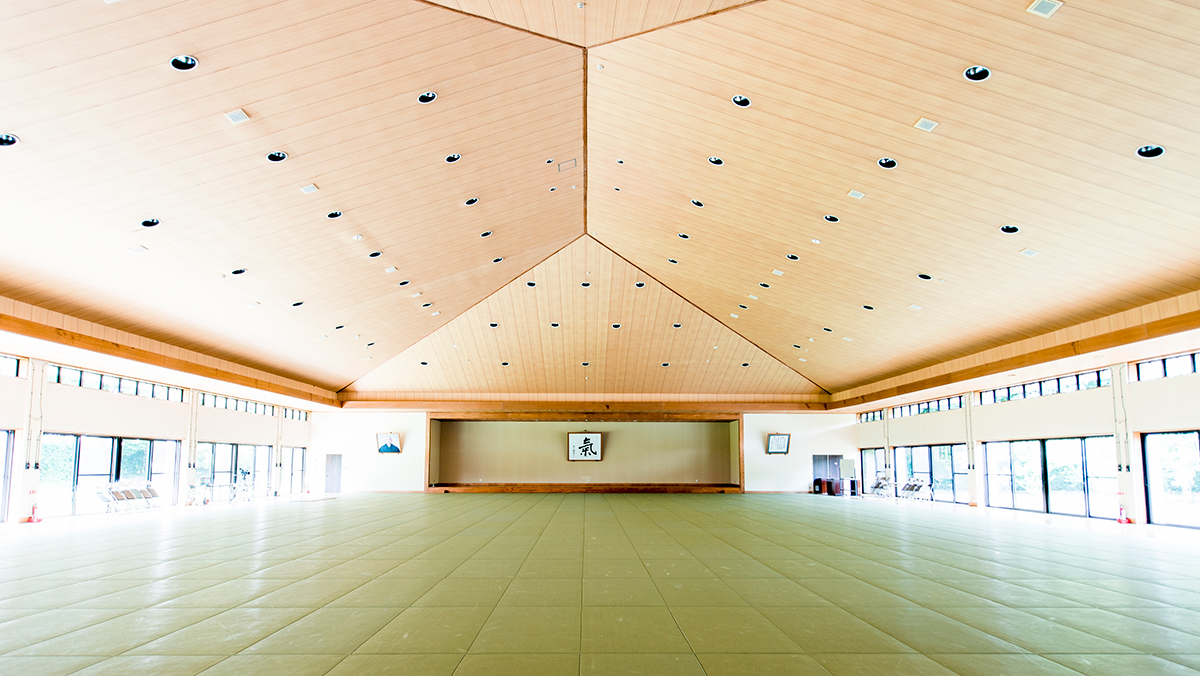Last year, I was asked to participate on the popular TV program “Asaichi,” on Japan’s public broadcasting station, NHK. This program aired in April 2021. At that time, I provided a variety of specific approaches to dealing with the fatigue, irritability, and anxiety caused by Covid-19. After the program was broadcast, there was a huge response from all over Japan.
At the end of the program, we talked about “noticing intangible signals.” I explained that we often tend to move only when we are told or on demand. However, this is often too late in terms of timing.
For example, in the practice of Shinshin Toitsu Aikido, when our opponent attacks us with a punch, as in “munatsuki,” and we react only after it hits us, this is too late!
When there is an attack, the mind of the opponent moves first before the body moves. When our mind is calm, we can feel the movement of the opponent’s mind as a “Ki movement.” This way we can notice the intangible signals. By taking action when we sense the presence of that signal, we can act effectively without being too late.
Imagine that you want to order in a restaurant, and the waiter does not notice you. This is despite the fact that the restaurant is not very busy, and the waiter is available. This is because the waiter waits to respond until approached by the customer. If the act of being approached by a customer is compared to a “munatsuki” attack, this means that the waiter is moving after he has been hit.
When a customer wants to ask a waiter for something, the customer’s mind is moving first at that moment. This is expressed as a signal called “Kehai”, the Ki movement.
People who perceive and act on intangible signals are able to provide customers with what they need, when they need it. We would describe such a waiter as “attentive.”
Whether we notice and respond to tangible words and attitudes or to intangible “Ki,” the results will vary greatly.
Koichi Tohei Sensei learned this on the battlefield. When there is a crisis, formless signals are shown as signs.
When the mind is calm, we can notice these signs and respond usefully to them. But when the mind is disturbed, we must deal with a crisis after it has occurred, and in a war zone, this is too late.
Therefore, even in a war zone, Koichi Tohei Sensei practiced daily Ki breathing exercises to calm his mind.
On the TV program “Asaichi”, Mr. Sadaharu Oh also spoke about the “surface of the water with still waves,” which he had learned from Koichi Tohei Sensei:
On windy days, the surface of the lake is covered with waves. Then, even if the moon is in the sky, it will not reflect its image on the surface of the lake. When the waves calm down infinitely, and become like a mirror, the moon reveals itself as the moon. In other words, when the waves of a lake are infinitesimally small, they correctly reflect the image on the surface of the lake. When the mind becomes as infinitely calm as the surface of the lake, we can notice the Ki extended by the other person as a signal of movement to come.
If we struggle to understand with our brain or see with our eyes, we will lose sight of the intangible. The only way is to calm the mind.
This is discussed in the trilogy book “Dojinai” in Japanese with Mr. Tatsuro Hirooka and Mr. Sadaharu Oh. in which they explain in detail in their own words.
Noticing signals does not mean “looking at their faces”. This is a point that is easily mistaken and should be noted.
When looking at the other person’s facial expression, the mind can be preoccupied with “how they think of me” and the field of vision become narrower, making it impossible to notice the signs of movement to come.
The movement of the mind is transmitted by Ki. And when the mind is calm, the movement of Ki can be understood. Furthermore, if you act when Ki is moving, you will not be too late.
When you are struggling but not getting results, you are often looking at the other person’s words or attitude and then acting. Because you are always late, it is like a pushing the wrong button.
The quickest way to learn these things is to learn to use your mind and body to notice the unseen.
I would like to suggest that you get this feeling through practicing Shinshin Toitsu Aikido.
Translate: Moe Mimori
Edited by: C. Curtis
Hawaii Ki Federation
https://www.hawaiikifederation.org/

